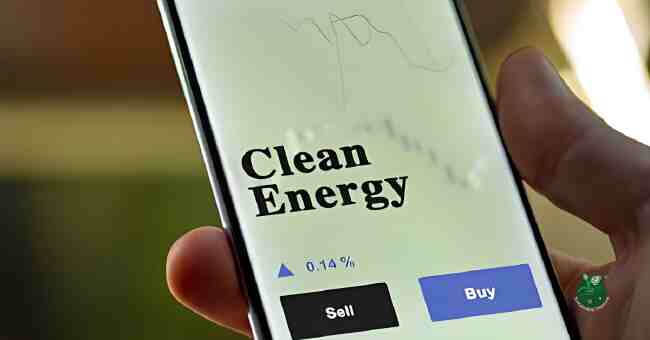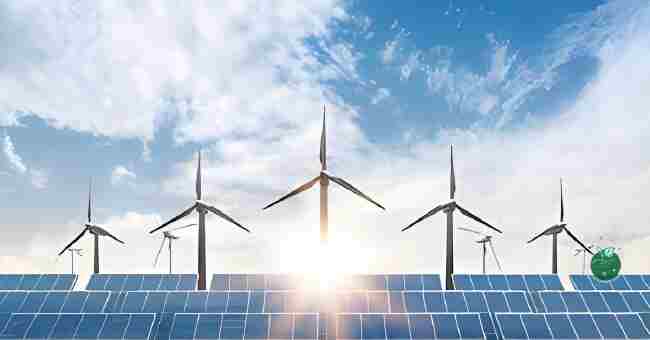Table of Contents
Are you wondering how to integrate clean tech investments? Yes, Integrating clean tech investments is crucial for building a sustainable future.
As a child, witnessing the effects of pollution on my hometown left a lasting impact. I vowed to be part of the solution, driving positive change through conscious investments.
My passion intensified during my finance studies, where I learned about the immense potential of clean technologies to revolutionize industries while preserving our planet’s well-being. Drawing from personal experiences and academic insights, I’m committed to guiding you through this transformative journey.
In this comprehensive guide, we’ll explore practical strategies to seamlessly integrate clean tech investments into your portfolio, unlocking financial returns while contributing to a cleaner, greener tomorrow.
Let’s embark on this path together, shaping a sustainable future, one investment at a time.
Understanding Clean Tech Investments

Clean tech investments encompass a wide range of technologies and innovations aimed at addressing environmental challenges and promoting sustainable practices.
This includes renewable energy sources like solar, wind, and hydroelectric power, as well as energy storage solutions, green transportation, and sustainable agriculture.
The significance of clean tech investments lies in their ability to drive the transition towards a low-carbon economy, reduce greenhouse gas emissions, and mitigate the impact of climate change.
By investing in these technologies, we not only contribute to a healthier planet but also position ourselves at the forefront of a rapidly growing and increasingly profitable market.
The Benefits of Clean Tech Investments
Integrating clean tech investments into your portfolio offers numerous benefits, extending beyond the realm of environmental sustainability.
Here are some key advantages:
- Financial Returns: As the demand for clean energy solutions continues to rise, clean tech investments have demonstrated impressive growth potential and attractive returns. Many clean tech companies are at the forefront of innovation, positioning themselves for long-term success in a rapidly evolving market.
- Diversification: Clean tech investments provide an opportunity to diversify your portfolio, reducing overall risk and exposure to volatility in traditional sectors.
- Risk Mitigation: By investing in clean technologies, you can mitigate the risks associated with climate change and the potential disruptions it may cause to traditional industries.
- Social and Environmental Impact: Clean tech investments contribute to a more sustainable future by supporting the development and adoption of environmentally friendly technologies, reducing greenhouse gas emissions, and promoting responsible resource management.
Government Support and Policies
Governments worldwide have recognized the urgency of addressing climate change and promoting clean energy solutions. As a result, many countries have implemented supportive policies and initiatives to encourage clean tech investments and accelerate the transition to a clean energy economy.
These policies may include tax incentives, subsidies, feed-in tariffs, and regulatory frameworks that create a favorable environment for clean tech projects.
By staying informed about government support and policies, investors can make more informed decisions and capitalize on emerging opportunities in the clean tech sector.
Navigating the Clean Tech Investment Landscape
The clean tech investment landscape offers a diverse range of opportunities, catering to different investment goals and risk appetites.
Here are some of the key investment avenues to consider:
- Venture Capital: Early-stage clean tech startups often seek venture capital funding to support their research, development, and commercialization efforts. Venture investing in clean tech offers the potential for high returns but also carries higher risks.
- Private Equity: Private equity firms invest in more established clean tech companies, providing capital for expansion, acquisitions, or restructuring. This investment avenue can offer more stability compared to early-stage ventures.
- Public Markets: Investors can gain exposure to clean tech companies through public stock exchanges, either by purchasing individual stocks or investing in exchange-traded funds (ETFs) focused on the clean energy sector.
- Project Finance: Clean energy projects, such as wind farms or solar power plants, often require significant upfront capital investment.
Project finance opportunities allow investors to participate in the development and operation of these projects, generating long-term returns through power purchase agreements or other revenue streams.
When evaluating clean tech investment opportunities, it’s crucial to conduct thorough due diligence, assess the potential risks and rewards, and align your investment strategy with your financial goals and risk tolerance.
Strategies for Successful Clean Tech Investments

To maximize the potential of your clean tech investments, consider implementing the following strategies:
- Diversification: Diversify your clean tech investments across different technologies, sectors, and geographic regions to mitigate risk and enhance overall portfolio stability.
- Long-term Perspective: Clean tech investments often require a long-term outlook, as the adoption of new technologies and the transition to a clean energy economy can take time. Be prepared to hold your investments for an extended period to realize their full potential.
- Due Diligence: Conduct comprehensive due diligence on potential clean tech investments, including a thorough analysis of the technology, management team, market potential, and financial projections.
- Seek Expert Advice: Consider working with experienced financial advisors or consultants who specialize in clean tech investments. Their expertise can provide valuable insights and guidance throughout the investment process.
- Stay Informed: Stay updated on the latest trends, emerging technologies, and regulatory developments in the clean tech sector. This knowledge can help you identify new investment opportunities and make informed decisions.
Financing Clean Energy Ventures
Financing is a critical component of scaling clean energy projects and bringing innovative technologies to market. Here are some financing options to consider for clean energy ventures:
- Project Finance: As mentioned earlier, project finance is a common approach for financing large-scale clean energy projects, such as wind farms, solar power plants, and hydroelectric facilities.
- Green Bonds: Green bonds are debt instruments issued by governments, corporations, or financial institutions specifically to fund environmentally friendly projects or initiatives.
- Crowdfunding: Crowdfunding platforms have emerged as an alternative financing option for clean energy startups and projects, allowing individuals to invest in and support sustainable initiatives.
- Venture Capital and Private Equity: As discussed in the previous section, venture capital and private equity firms play a crucial role in providing funding for clean tech companies at various stages of their growth.
Financial innovation and the development of new financing mechanisms will be crucial in accelerating the adoption of clean energy technologies and driving the mass integration of clean tech solutions.
Trends and Emerging Technologies
The clean tech sector is constantly evolving, with new trends and emerging technologies shaping the future of sustainable energy and environmental solutions.
Here are some notable trends and technologies to watch:
- Battery Storage: Advancements in battery storage technologies are crucial for integrating intermittent renewable energy sources, such as solar and wind, into the grid. Investments in this area can unlock the potential for widespread adoption of renewable energy.
- Smart Grids: Smart grid technologies enable more efficient and reliable distribution of electricity, facilitating the integration of renewable energy sources and optimizing energy usage.
- Carbon Capture and Storage: Technologies that capture and store carbon dioxide emissions from industrial processes and power plants can play a significant role in mitigating climate change.
- Sustainable Agriculture: Innovations in sustainable agriculture practices, such as precision farming, vertical farming, and alternative protein sources, can contribute to a more sustainable food system and reduce the environmental impact of traditional agriculture.
- Green Transportation: The development of electric vehicles, hydrogen fuel cells, and sustainable biofuels is driving the transition towards a cleaner and more efficient transportation sector.
Staying informed about these trends and emerging technologies can help investors identify promising investment opportunities and position themselves at the forefront of the clean tech revolution.
Environmental and Social Impact
Clean tech investments not only offer financial returns but also contribute to creating a more sustainable future by reducing greenhouse gas emissions, promoting the use of renewable energy sources, and minimizing environmental degradation.
By investing in clean technologies, you can actively participate in the transition towards a low-carbon economy and support initiatives that address pressing environmental challenges.
Moreover, clean tech investments often have a positive social impact by creating new job opportunities, fostering innovation, and promoting economic development in sectors aligned with sustainability principles.
This intersection of financial returns and positive environmental and social impact has led to the rise of impact investing, where investors seek to generate measurable and beneficial outcomes alongside financial returns.
Preparing for Clean Tech Investment Opportunities
As the demand for clean tech solutions continues to grow, investors must stay vigilant and prepared to capitalize on emerging investment opportunities.
Here are some practical tips to help you position yourself for success:
- Stay Informed: Subscribe to industry publications, attend conferences and webinars, and follow thought leaders in the clean tech sector. Staying informed about the latest developments, trends, and innovations will help you identify promising investment opportunities.
- Build a Network: Attend networking events and join industry associations to connect with other investors, entrepreneurs, and experts in the clean tech space.
These connections can provide valuable insights, investment opportunities, and collaborative partnerships.
- Seek Professional Advice: Consider working with financial advisors, investment managers, or consultants who specialize in clean tech investments. Their expertise can help you navigate the complexities of this sector and make informed decisions aligned with your investment goals and risk tolerance.
- Explore Educational Resources: Leverage educational resources, such as online courses, webinars, and industry reports, to deepen your understanding of clean tech investments. This knowledge will empower you to evaluate opportunities more effectively and stay ahead of emerging trends.
- Consider Joining Investment Groups: Participating in clean tech investment groups or clubs can provide valuable networking opportunities, access to exclusive deals, and a platform for shared knowledge and resources.
- Attend Industry Events: Attend clean tech conferences, summits, and trade shows to stay up-to-date on the latest developments, connect with industry leaders, and gain insights into promising investment opportunities in the clean tech space.
Here’s an example table summarizing some key considerations when preparing for clean tech investment opportunities:
| Consideration | Description |
|---|---|
| Education | Continuously expand your knowledge through courses, webinars, and industry reports |
| Networking | Build connections with investors, entrepreneurs, and experts in the clean tech sector |
| Expert Advice | Seek guidance from professionals specializing in clean tech investments |
| Industry Events | Attend conferences, summits, and trade shows to stay informed and make valuable connections |
FAQs

How Do You Jumpstart The Clean Tech Economy?
Jumpstarting the clean tech economy requires a multi-faceted approach involving government initiatives, private sector investment, and public awareness.
Firstly, governments can play a pivotal role by implementing supportive policies, such as tax incentives, subsidies, and regulatory frameworks that encourage the development and adoption of clean technologies.
Additionally, public investments in research and development, as well as infrastructure projects like renewable energy installations and electric vehicle charging stations, can help accelerate the transition towards a clean tech economy.
Private sector investment is equally crucial. Venture capitalists, angel investors, and institutional investors can provide the necessary funding for clean tech startups and companies to bring innovative solutions to market.
Furthermore, established corporations can invest in clean tech initiatives, either through internal research and development or by acquiring promising clean tech companies.
Finally, raising public awareness about the benefits of clean technologies and promoting sustainable lifestyles can drive consumer demand for clean tech products and services, further fueling the growth of this industry.
What Does Cleantech Finance Include?
Cleantech finance encompasses a range of financial instruments and mechanisms designed to support the development, deployment, and scaling of clean technologies.
Some key components of cleantech finance include:
- Venture Capital: Early-stage funding for clean tech startups and companies developing innovative technologies or solutions in areas like renewable energy, energy efficiency, sustainable transportation, and waste management.
- Project Finance: Financing for large-scale clean tech projects, such as wind farms, solar power plants, or energy-efficient building retrofits. This often involves a combination of debt and equity financing from various sources, including banks, institutional investors, and government agencies.
- Green Bonds: Debt instruments issued by governments, corporations, or financial institutions to finance environmentally-friendly projects or initiatives, such as renewable energy infrastructure or sustainable urban development projects.
- Crowdfunding: Online platforms that allow individuals to invest in and support clean tech startups and projects, providing an alternative source of funding for entrepreneurs and companies in the sector.
- Government Grants and Incentives: Financial support from governments in the form of grants, tax credits, or other incentives to encourage the development and adoption of clean technologies.
- Carbon Finance: Financial instruments and markets related to the trading of carbon credits or offsets, aimed at incentivizing the reduction of greenhouse gas emissions.
Is Cleantech An Esg?
Cleantech (clean technology) is closely aligned with the principles of ESG (Environmental, Social, and Governance) investing, but it is not an ESG category in itself.
ESG investing is a broader approach that considers a company’s performance across a range of environmental, social, and governance factors when making investment decisions.
While cleantech companies often score well on the environmental aspect of ESG due to their focus on sustainable technologies and solutions, they may also be evaluated based on their social and governance practices, such as employee welfare, diversity and inclusion policies, and corporate governance structures.
Cleantech can be considered a subset or a specific investment theme within the broader ESG investment universe, as it directly addresses environmental concerns and contributes to the transition towards a more sustainable economy.
Why Invest In Clean Tech?
There are several compelling reasons to invest in clean tech:
- Environmental Impact: Clean tech investments support the development and adoption of sustainable technologies that help mitigate climate change, reduce greenhouse gas emissions, and promote responsible resource management.
- Financial Returns: As the demand for clean energy and sustainable solutions continues to grow, clean tech companies and projects can offer attractive long-term investment returns.
- Diversification: Clean tech investments can provide portfolio diversification benefits, as the sector is often less correlated with traditional industries and less susceptible to certain market risks.
- Regulatory Support: Many governments are implementing policies and regulations that favor clean tech solutions, creating a supportive environment for investment and innovation in this sector.
- Aligning Values and Investment Goals: Clean tech investments allow investors to align their financial goals with their environmental and social values, contributing to a more sustainable future while potentially generating positive returns.
- Future Growth Potential: As the world transitions towards a low-carbon economy, the clean tech sector is expected to experience significant growth, presenting numerous investment opportunities.
What Concerns Might Be Associated With Cleantech Companies?
While cleantech companies offer promising solutions for a more sustainable future, there are some potential concerns investors should be aware of:
- Technology Risk: Cleantech companies often rely on emerging or unproven technologies, which can carry higher risks of failure or delays in commercialization.
- Regulatory Uncertainty: Changes in government policies, subsidies, or regulations can significantly impact the viability and profitability of cleantech companies and projects.
- Capital Intensity: Many cleantech projects and companies require substantial upfront capital investments, which can increase financial risks and delay profitability.
- Competition and Market Adoption: As the cleantech sector grows, companies may face increasing competition, and the rate of market adoption for new technologies can be uncertain.
- Supply Chain and Resource Constraints: Some cleantech solutions may rely on scarce or geographically concentrated resources, creating supply chain vulnerabilities or resource constraints.
- Scalability Challenges: Scaling up cleantech solutions from pilot projects to widespread commercial deployment can present technical, logistical, and financial challenges.
It’s essential for investors to thoroughly evaluate these potential concerns, conduct rigorous due diligence, and carefully manage risks when investing in cleantech companies or projects.
What Is The Clean Technology Sector?
The clean technology sector, often referred to as “cleantech,” encompasses a broad range of technologies, products, and services that aim to reduce negative environmental impacts and promote sustainable practices. This sector encompasses various industries and technologies, including:
- Renewable Energy: Technologies like solar, wind, geothermal, and hydroelectric power generation.
- Energy Efficiency: Solutions that improve energy efficiency in buildings, manufacturing processes, and transportation, such as energy-efficient lighting, insulation, and smart grid technologies.
- Sustainable Transportation: Electric vehicles, hydrogen fuel cells, and biofuels that reduce emissions from transportation.
- Water and Wastewater Treatment: Technologies for water purification, desalination, wastewater treatment, and efficient water usage.
- Waste Management: Recycling, waste-to-energy, and other solutions for reducing and managing waste streams.
- Green Building: Energy-efficient building materials, sustainable construction methods, and green architecture.
- Sustainable Agriculture and Forestry: Precision farming techniques, alternative protein sources, and sustainable forestry practices.
The clean technology sector aims to provide innovative solutions that address environmental challenges while promoting economic growth and contributing to a more sustainable future.
What Is An Example Of A Cleantech?
Cleantech, or clean technology, encompasses a wide range of innovative solutions and technologies aimed at promoting sustainability and reducing environmental impact. Here are a few examples of cleantech:
- Solar Photovoltaic (PV) Systems: Solar PV systems convert sunlight directly into electricity, providing a renewable and clean source of energy for residential, commercial, and utility-scale applications.
- Wind Turbines: Wind turbines harness the kinetic energy of wind to generate electricity, offering a renewable and emission-free alternative to fossil fuel-based power generation.
- Electric Vehicles (EVs): EVs, including battery-electric and fuel cell vehicles, eliminate tailpipe emissions and significantly reduce the environmental impact of transportation compared to traditional gasoline-powered vehicles.
- Energy-Efficient Building Materials: Insulation materials, energy-efficient windows, and green roofing systems can significantly improve the energy efficiency of buildings, reducing their overall carbon footprint.
- Smart Grid Technologies: Smart grid technologies, such as advanced metering infrastructure and energy management systems, enable more efficient and reliable distribution of electricity, facilitating the integration of renewable energy sources and reducing energy waste.
- Water Treatment and Desalination: Technologies like reverse osmosis and membrane filtration systems provide efficient and sustainable methods for treating and purifying water, addressing water scarcity and reducing the environmental impact of traditional treatment processes.
- Sustainable Agriculture Solutions: Precision farming techniques, vertical farming, and plant-based protein alternatives are examples of cleantech solutions that aim to promote sustainable agriculture practices and reduce the environmental footprint of food production.
These examples illustrate the diverse range of cleantech solutions being developed and adopted across various industries and sectors to address environmental challenges and promote sustainability.
What Is The Difference Between Cleantech And Greentech?
While the terms “cleantech” and “greentech” are often used interchangeably, there are some nuances in their definitions and scope:
- Cleantech (Clean Technology): Cleantech is a broad term that encompasses all technologies, products, and services designed to reduce negative environmental impacts and promote sustainability. It covers a wide range of industries, including renewable energy, energy efficiency, sustainable transportation, water and waste management, green building, and sustainable agriculture.
- Greentech (Green Technology): Greentech is generally considered a subset of cleantech, specifically focusing on technologies and solutions that directly address environmental challenges and promote eco-friendly practices. It often emphasizes technologies that reduce greenhouse
Conclusion
The integration of clean tech investments into investment portfolios is not only a financially prudent decision but also a moral imperative in the face of pressing environmental challenges.
As we navigate the transition towards a more sustainable future, clean tech investments play a crucial role in driving innovation, reducing our carbon footprint, and promoting the adoption of renewable energy sources.
Throughout this comprehensive guide, we’ve explored the diverse landscape of clean tech investments, highlighting the benefits, strategies, financing options, and emerging trends shaping this dynamic sector.
By staying informed, building a strong network, seeking expert advice, and adopting a long-term perspective, investors can position themselves at the forefront of the clean tech revolution.
Embracing clean tech investments is not just about pursuing financial returns; it’s about actively contributing to a more sustainable future for our planet.
As we strive to mitigate the impact of climate change and promote environmental stewardship, clean tech investments offer a powerful opportunity to align our financial goals with our values and drive positive change.
So, whether you’re an individual investor or a financial institution, we encourage you to explore the world of clean tech investments and become part of the solution.
By integrating these sustainable technologies and practices into your investment portfolio, you can not only generate attractive returns but also leave a lasting legacy for future generations.



